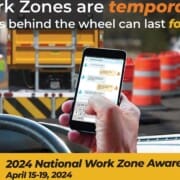Clearing up the Relaxed Hours of Service HOS Regulations
As supply shortages spread across the country, Americans are becoming increasingly more dependent on truck drivers. From coast to coast, consumers are demanding more supplies to be manufactured and delivered. Truck drivers are the key to delivering necessary goods to consumers quickly and efficiently, however, they can only drive so many miles in 11 hours.
The FMCSA has recently relaxed HOS regulations to help remedy the national emergency. Drivers who haul medical supplies, hand sanitizer and disinfectants, food for emergency restocking, etc. do not have to abide by the 11-hour and 14-hour rules. They can now drive as long as they are safely able to, as long as they take a full 10-hour break between shifts.
Professional truck drivers rejoice, especially the seasoned ones, as the news spreads about Hours of Service (HOS) Rules being lifted temporarily. There may be some misconceptions, however, about just how widespread the effect of the relief is.
According to the emergency declaration, the effort is geared only toward those drivers who are hauling supplies that will directly assist relief. The relaxed regulations would not apply to a driver hauling non-essential goods, like cosmetics or paint.
Qualified loads might include:
- Medicine or medical supplies
- Fuel
- Cleaning Supplies
- Food for emergency restocking
- Livestock (a precursor to food)
- Other qualified loads (See the US DOT website for a comprehensive list)
If a driver has a load of both qualified items and non-qualified items, he does not have to comply with normal HOS regulations as long as the load is mostly emergency items. For multi-stop loads, if a driver delivers all his qualified emergency items and his next deliveries do not qualify, he will be regulated by regular HOS rules.
Truck drivers currently have to comply with complicated rules regarding how many hours they can drive in a day and in a week. Under this relief effort, there is no such thing as a “fresh clock.” According to FMCSA, drivers do not have to abide by an 11 or 14-hour clock, nor are their 60/70 clocks in effect. When the relief effort is over, drivers will not have to endure a 34-hour break to reset. Simply go back to normal.
Many may question how their ELDs will allow them to drive so many hours without throwing alerts to their safety departments. DOT recommends you switch your clock to personal conveyance (off-duty driving). When normal conditions return, drivers will automatically acquire a fresh 60/70 clock (given they were on personal conveyance a consecutive 34 hours). When fatigued, a driver should immediately inform their employer to receive a standard 10-hour break.
Eventually, the pandemic will die off and normal regulations resume. Until then, truck drivers will keep America on their feet, as they often do, by working tirelessly to supply consumers with commodities often taken for granted. Remember to thank a truck driver, their hard work and dedication keeps this country rolling! #ThankATrucker











